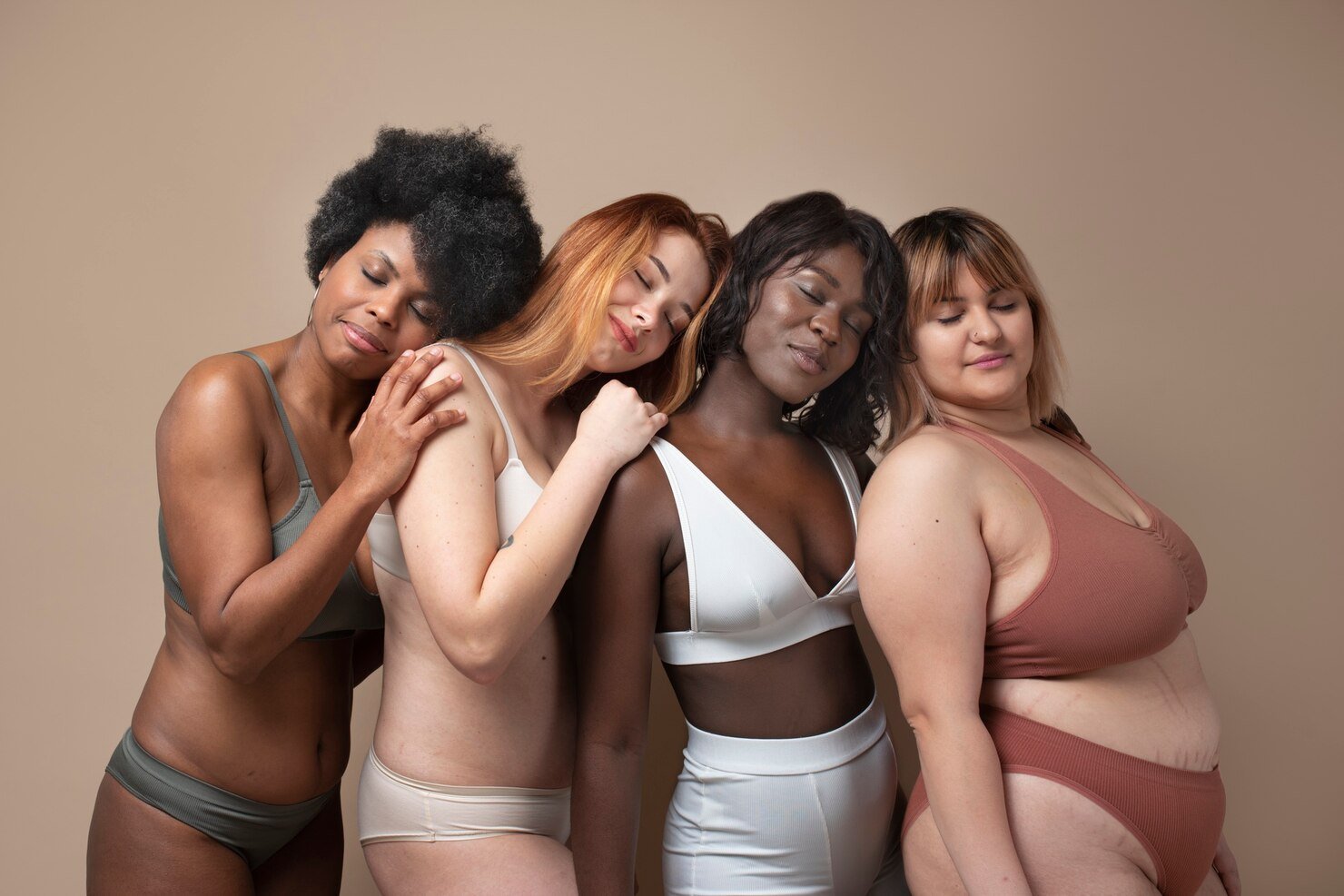Navigating Body Image: From Body Positivity to Body Neutrality
by Dr Martha Tara Lee
Sex & Relationship Therapist
Navigating Body Image: From Body Positivity to Body Neutrality
In the evolving landscape of body image movements, body positivity and body neutrality have emerged as significant approaches to how we perceive and relate to our bodies. Each offers a distinct way to address body image issues, with its own set of benefits and challenges. As a relationship counsellor and clinical sexologist, I’ve seen firsthand how these perspectives impact individuals and relationships. This blog delves into the nuances of body positivity and neutrality, explores their historical contexts, and provides actionable steps for fostering a healthier body relationship.
The Evolution of Body Image Movements
Body Positivity: A Historical Overview
Body positivity originated from fat acceptance movements in the 1960s and 1970s, advocating for the acceptance of diverse body types and challenging societal beauty standards that favor thinness. The movement gained momentum with the rise of social media, where individuals shared images and stories promoting body diversity. This movement has significantly influenced public perceptions of beauty and self-worth, emphasizing that beauty comes in all shapes and sizes (Cwynar-Horta, 2016).
Body Neutrality: A New Perspective
Body neutrality emerged as a counter to body positivity, suggesting that one’s value does not depend on their appearance. Instead of encouraging love for one’s body, body neutrality promotes viewing the body as a functional entity, focusing on what it can do rather than how it looks. This approach aims to alleviate the pressure to feel positively about one’s appearance and reduce the emotional burden associated with body image (Leboeuf, 2021).
Pros and Cons: Body Positivity vs. Body Neutrality
Body Positivity
Cons:
Toxic Positivity: The pressure to "love" your body every day can be overwhelming and unrealistic, sometimes leading to feelings of inadequacy when one fails to meet these expectations (Tiggemann & Slater, 2015).
Focus on Appearance: Continues to emphasize physical appearance, which can perpetuate appearance-based self-worth and dissatisfaction.
Exclusion: May alienate those who find body positivity’s focus on appearance challenging or unattainable.
Pros:
Empowerment: Encourages individuals to reclaim their self-worth and challenge restrictive beauty norms (Fardouly & Vartanian, 2016).
Inclusion: Promotes representation and acceptance of diverse body types, helping marginalized groups feel seen.
Boosted Self-Esteem: Focusing on positive aspects of body image can enhance confidence and reduce anxiety.
Body Neutrality
Cons:
Emotional Detachment: May lead to avoidance of addressing genuine emotions and issues related to body image.
Lack of Empowerment: Might feel unmotivating for those who seek a more emotionally connected or positive body experience.
Avoidance: Risk of dismissing or ignoring important feelings about body image, preventing effective resolution.
Pros:
Reduced Pressure: Lessens the emotional burden of needing to feel positively about one’s body all the time (Leboeuf, 2021).
Focus on Functionality: Encourages appreciation of the body’s capabilities rather than its appearance, promoting a more practical perspective.
Accessibility: Easier for those who struggle with body image issues, as it avoids the idealistic expectations of body positivity.
Navigating Both Perspectives: A Balanced Approach
Combining elements from both body positivity and neutrality can offer a balanced approach to body image. Here’s how you can integrate these perspectives effectively:
Curate Your Media: Be selective about the media you consume. Follow accounts that promote realistic and diverse body images and avoid those that reinforce negative self-perceptions.
Digital Detox: Limit your screen time to reduce exposure to unrealistic beauty standards. A digital detox can help you focus on real-life experiences and relationships.
Shift Focus: Regularly acknowledge and appreciate what your body can do, rather than how it looks. This can foster a healthier, function-based relationship with your body.
Set Realistic Goals: Aim for self-compassion and acceptance. Understand that it’s okay to have fluctuating feelings about your body and that some days may be more challenging than others.
Open Conversations: Engage in open discussions about body image with trusted individuals or professionals. This can help prevent emotional detachment and promote a more nuanced understanding of body-related concerns.
Taking Action: Steps to Improve Your Relationship with Your Body
Limit Social Media Exposure: Curate your social media feed to include diverse body types and positive messages. This can help mitigate the impact of unrealistic beauty standards.
Engage in a Digital Detox: Schedule regular breaks from digital platforms to reduce the influence of societal beauty norms on your self-image.
Focus on Functionality: Celebrate your body’s abilities and achievements rather than its appearance. This shift in focus can improve your overall body perception.
Set Practical Self-Care Goals: Aim for realistic self-compassion rather than striving for constant positivity. Understand that body acceptance is a journey with ups and downs.
Seek Professional Support: If body image issues are affecting your well-being or relationships, consider consulting a psychologist/counsellor/psychotherapist who specializes in body image and self-esteem.
Ready to Transform Your Relationship with Your Body?
If you’re struggling with body image concerns or need guidance in finding a balanced approach between body positivity and neutrality, I’m here to help. As Singapore’s first sexologist with a Doctorate in Human Sexuality and over 15 years of experience, I offer expert support to help individuals and couples build healthier body relationships and improve their intimate lives. Book a consultation today to start your journey toward a more balanced and fulfilling self-view.
References
Cwynar-Horta, J. (2016). The commodification of the body positive movement on Instagram. Social Media + Society, 2(1), 205630511665481. https://doi.org/10.1177/2056305116654817
Fardouly, J., & Vartanian, L. R. (2016). Social media and body image concerns: Current research and future directions. Current Opinion in Psychology, 9, 1–5. https://doi.org/10.1016/j.copsyc.2015.09.005
Leboeuf, M. (2021). Exploring the body neutrality movement: A qualitative study. Body Image, 37, 135-146. https://doi.org/10.1016/j.bodyim.2021.01.007
Tiggemann, M., & Slater, A. (2015). The internet and body image concerns in preteenage girls. Journal of Early Adolescence, 35(5), 633–644. https://doi.org/10.1177/0272431614547054
About the author
Meet Dr. Martha Tara Lee, a highly experienced relationship counsellor and clinical sexologist. At The Counselling Place Singapore, Martha specializes in sex and sexuality issues and relationship counselling in English and Mandarin. Martha supports individuals and couples in achieving healthy, pleasurable relationships.
With expertise in sexuality, she helps individuals and couples overcome challenges and lead fulfilling lives. Her areas of focus include sexual inhibitions, desire discrepancies, LGBTQIA+ concerns, unconsummated relationships, sexual inhibitions, and kink communities.




